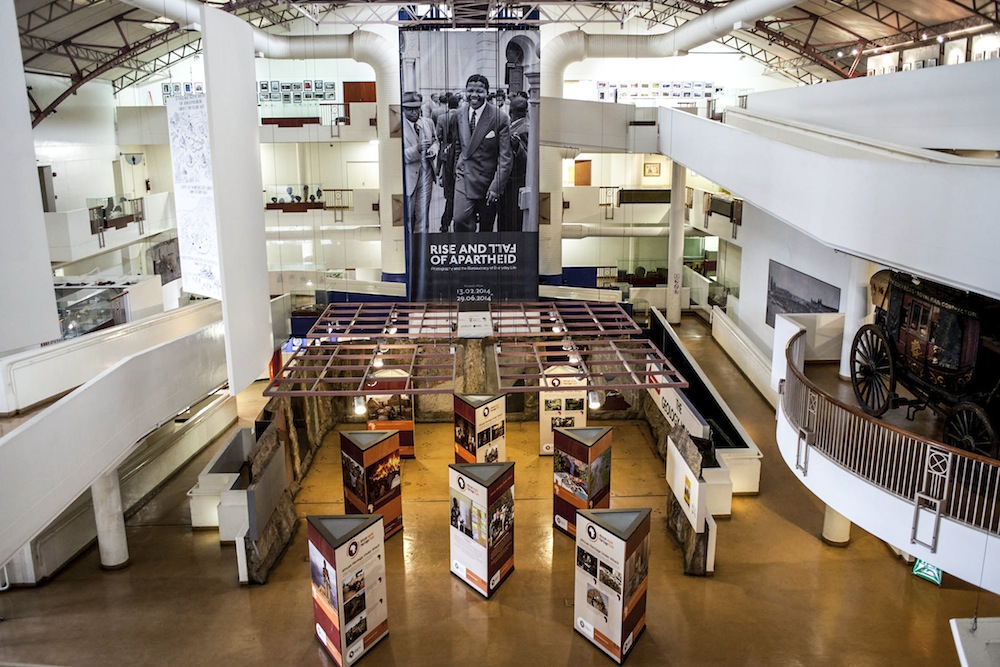MuseumAfrica.
All aspiring writers will attest to the pleasure of seeing their work appear in print for the first time. In my case, it was an article (published by this newspaper) on the new direction that the Africana Museum – shortly to rename itself MuseumAfrica – was taking in response to South Africa’s unfolding political transformation.
My very appointment, in April 1990, as curator of history was part of the museum’s seeking to reposition itself in a rapidly changing society.
By then, it had been recognised that if the museum was to remain a respected and properly funded cultural and educational resource in a future democratic South Africa, it had to move decisively away from the heavily Eurocentric focus of the past and become genuinely inclusive in the services it provided.
This would have a major impact not just on what was on display, but also on collection policies and educational programmes.
How MuseumAfrica went about implementing these changes, thereby becoming both a reflection of – and an active agent in – the transformation process, is related by Sara Byala in her 2013 book A Place That Matters Yet.
Since her history appeared, however, things have deteriorated sharply. Writing in the Mail & Guardian (Letting MuseumAfrica collapse is a cultural assault), Byala paints a depressing picture of where the museum finds itself today, with its very existence apparently under threat.
Personally, this came as no surprise. On a recent family visit to the museum, I was profoundly disheartened by what I saw. Empty spaces abounded, whole sections were unlit, interactive displays no longer functioned and hardly anything new seemed to have been added since my last visit.
Even more revealingly, we were the only visitors, despite this being a Sunday. What used to be the offices of a range of curators – among them a geologist, an ethnographer, two historians and curators for the costume and picture collections – have been unoccupied for years.
Whatever reasons there might be for the disastrous state of neglect into which the museum has fallen, it cannot be attributed to a failure to adapt to post-apartheid realities.
If anything, successive curators have swung too far in that direction for fear of being accused of pandering to notions of white cultural domination.
As a result, the “old” was jettisoned, almost in its entirety, in favour of installations with themes that carefully, even slavishly, mirrored what was felt to be the acceptable post-colonial struggle narrative.

Wasted resource: MuseumAfrica in Newtown, Johannesburg, has fallen into a state of neglect with empty spaces and interactive displays not working. (Oupa Nkosi)
The new-look MuseumAfrica certainly mounted some ground-breaking displays. I have especially fond memories of the comprehensive exhibition we put together on the 1956-1961 Treason Trial, the opening of which was attended by 19 of the original accused as well as several of the defence lawyers.
In the end, though, far too little of the museum’s remarkably rich and diverse collection has been put on display in the post-1994 era.
Over the decades, MuseumAfrica has amassed a vast array of artefacts relating to almost every field of human endeavour. Certainly, this includes material reminiscent of the bad old days of Eurocentric historiography – all those 1820 Settler tea cosies, Great Trek flintlocks, Randlord furniture and the like – but the greater part of it is ideologically neutral. Radios, after all, are used by everyone, regardless of colour. That being the case, showing what the earliest radios looked like and how they developed over time should surely be of interest to people across the board?
Why not fill some of the available space – and MuseumAfrica has more than enough of that – with interesting items of this nature, which all visitors, regardless of colour, can relate to?
Aside from physical artefacts, the museum also maintains an extraordinary pictorial collection – photographs, prints, watercolours, oils, engravings and other items.
I doubt whether there exists anywhere a fuller collection of Thomas Baines’s work, which documents so vividly the people and events of mid-19th-century Southern Africa, in particular the Eastern Cape.
As is the case with the physical artefacts, almost all of this continues to languish in storage, unseen by all except the curator in charge and the occasional researcher.
And, from what Byala wrote recently in these pages, even that limited availability would appear to be in jeopardy.
It is inevitable in all major museums that much – and, more often than not, most – of the collection ends up in storage, away from the public eye. A key function of museums, in fact, is to act as archives for physical objects illustrative of certain time periods that would otherwise be irretrievably lost.
That said, however, museums generally endeavour to showcase the best of their collections in the space available – and, in this regard, MuseumAfrica has fallen sadly short.
The (apparently permanent) consignment to storage of the greater part of MuseumAfrica’s collections is, I believe, one of the reasons why the museum is today so little visited.
It was something I used to harp on about when I was employed there, although invariably my bleats along the lines of “babies” and “bathwater” were disregarded.
Ultimately, however, this immeasurably rich and varied repository of South Africa’s heritage is today in crisis because it has been starved of resources by the Johannesburg city council.
It would seem that those in charge of such matters unfortunately simply do not see MuseumAfrica’s value, whether as a public recreational space, a tourist attraction, a research and educational resource or a historical conservation facility.
David Saks is the associate director of the South African Jewish Board of Deputies. He worked at MuseumAfrica in Newtown, Johannesburg, from 1990 to 1997